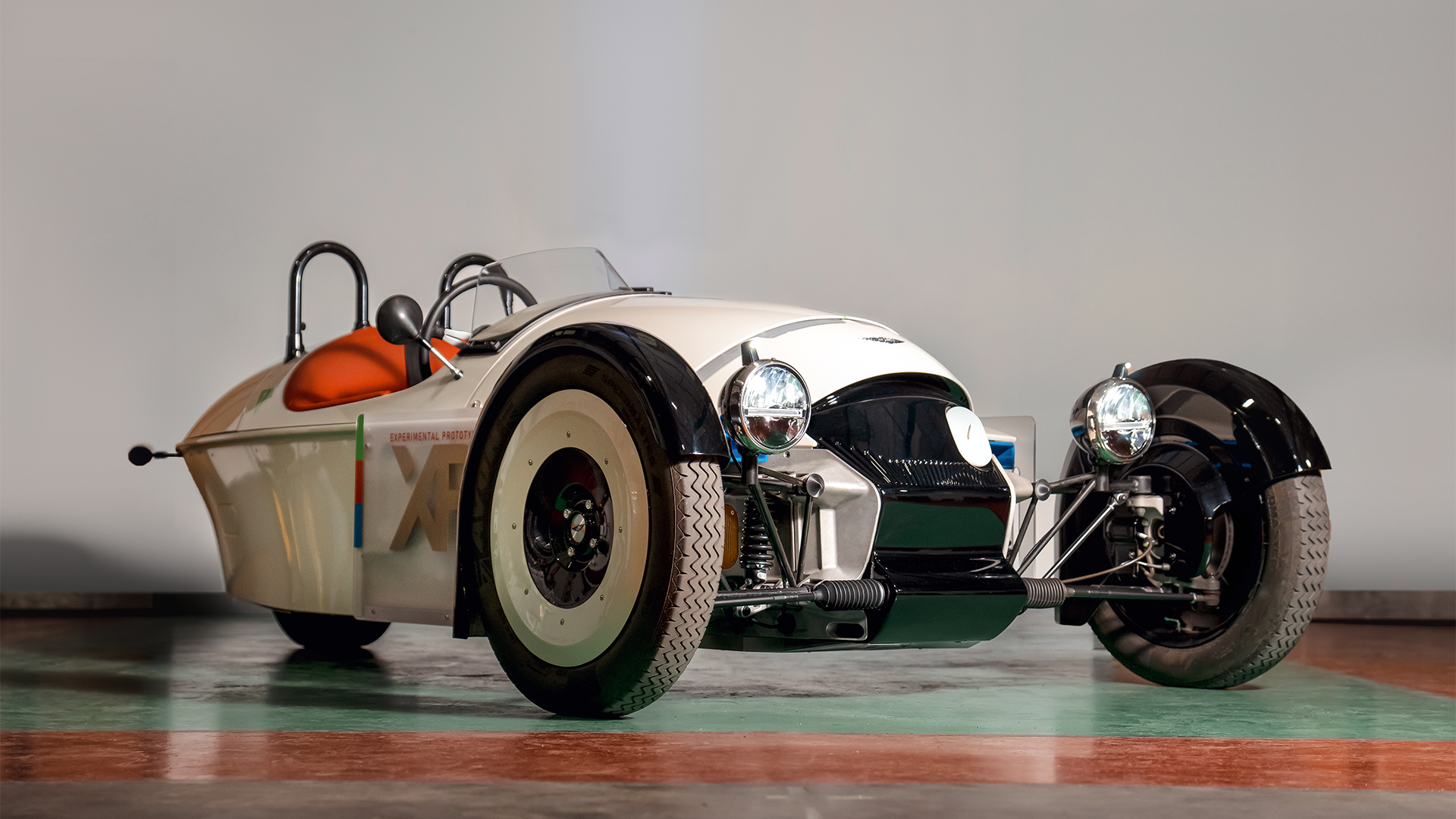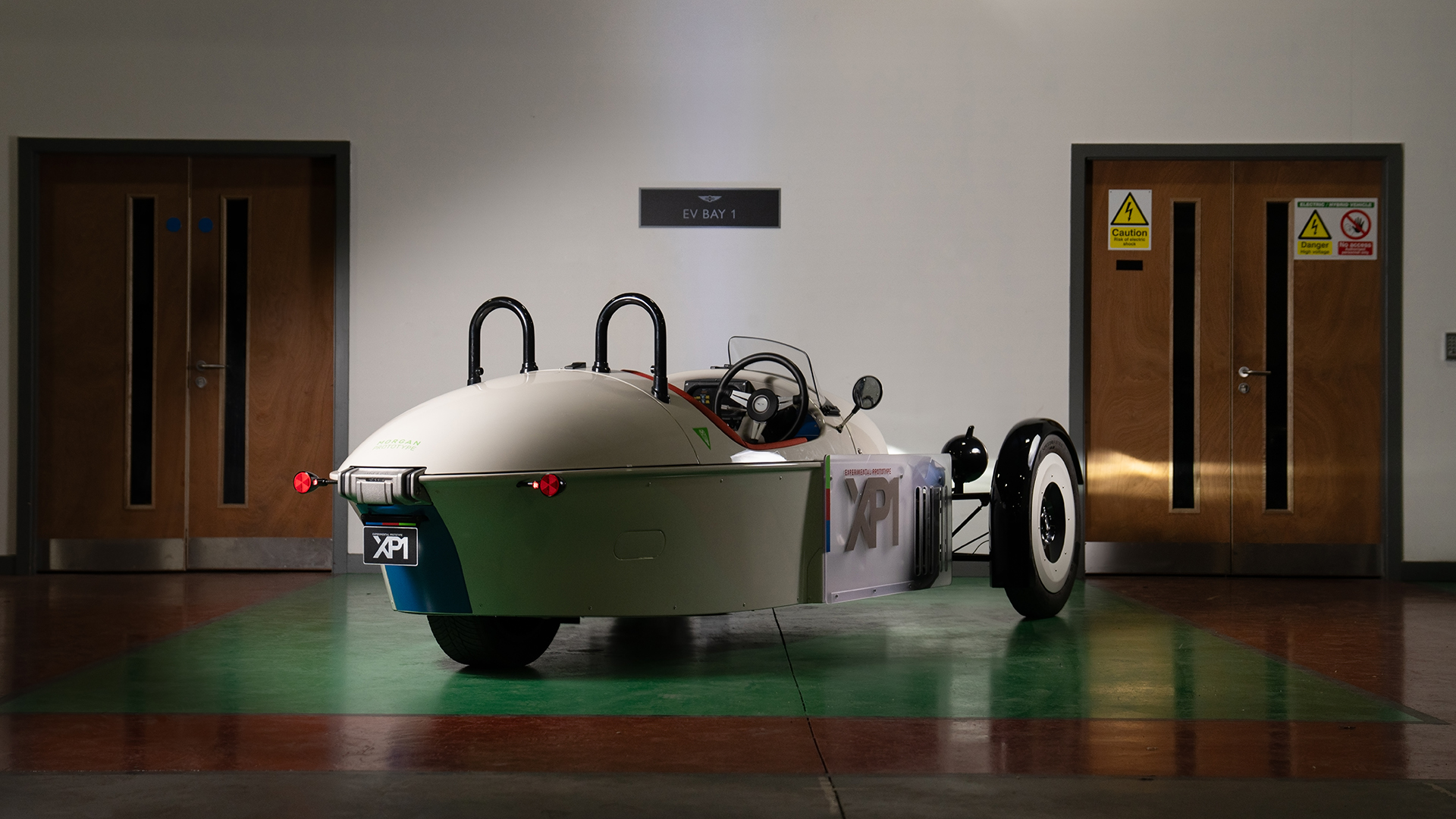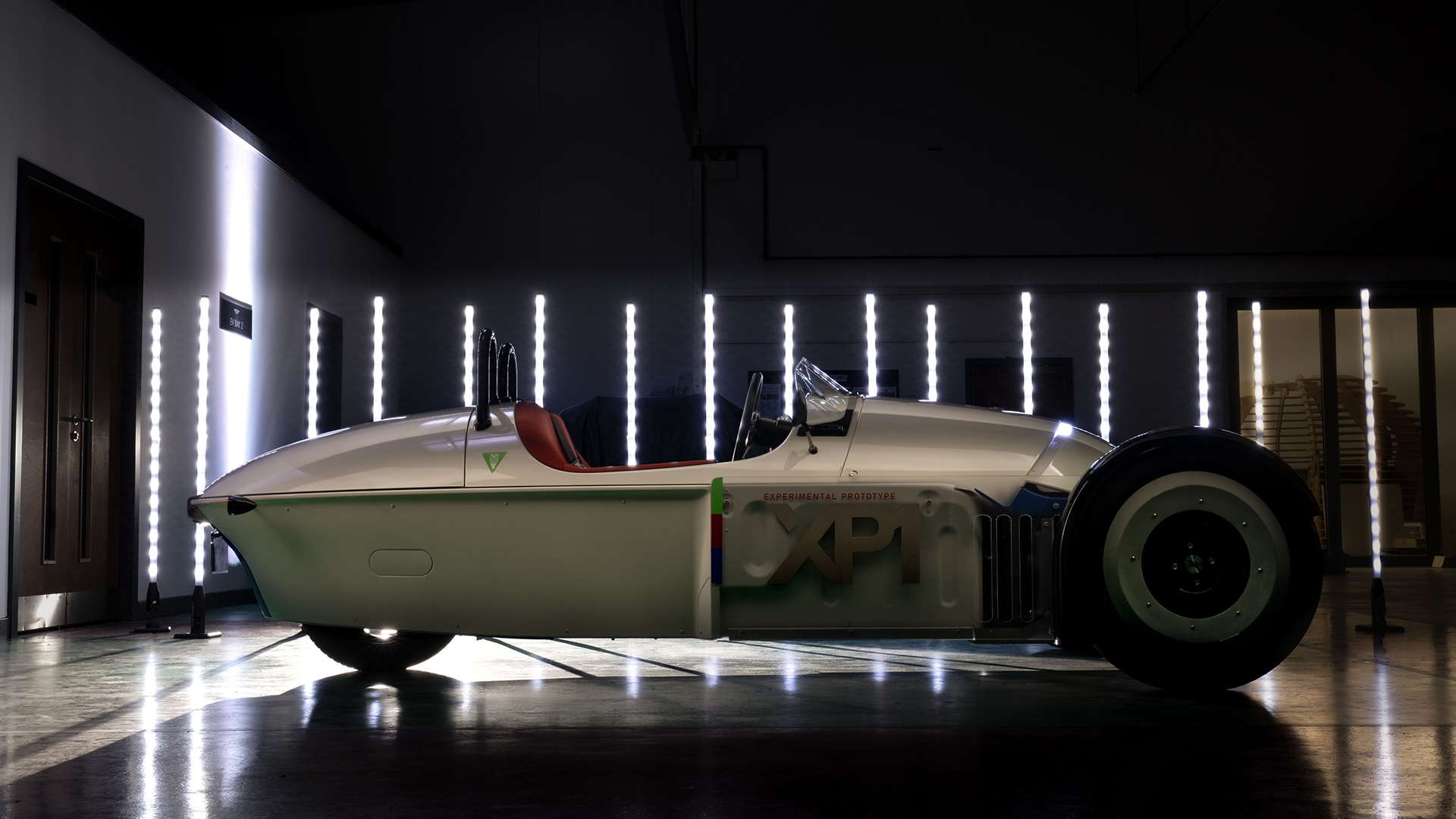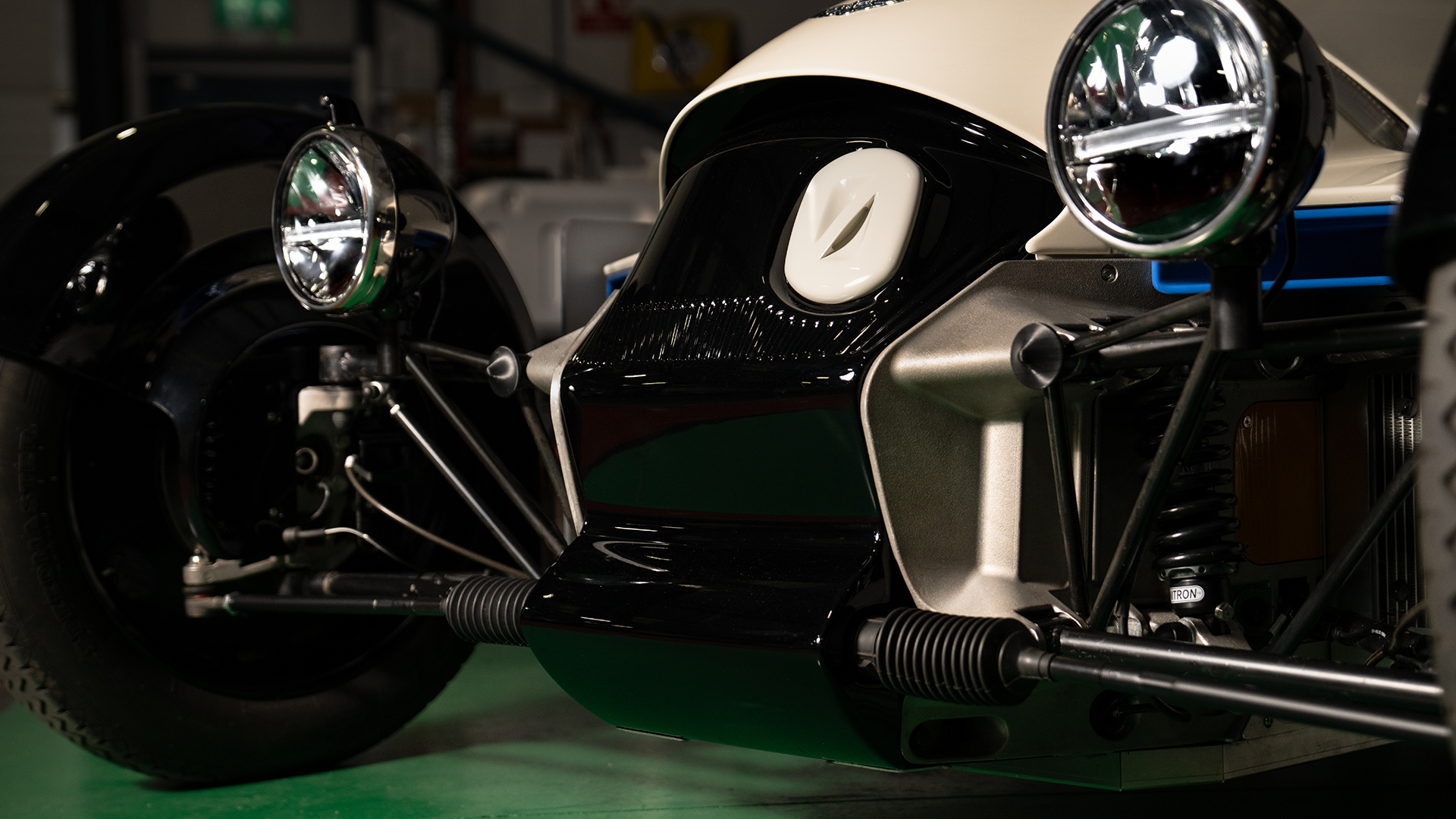Morgan signals its EV future with experimental XP-1 plug-in three-wheeler
Proof that even small-scale manufacturers can't evade the EV revolution

British sports car maker, Morgan Motor Company, which has been producing exquisite hand-made machines for over 100 years, has today announced that it has its eye firmly fixed on an electric future with the introduction of its XP-1 developmental vehicle.
Not destined for production in its current guise, the nippy three-wheeler, which itself is based on the same aluminum platform as the marque’s current, Ford 1.5-liter, petrol-powered Super 3, is purely a technology demonstrator, designed to allow engineers at the historic Malvern factory to work out the best combination of components, software mapping and configuration to make a pure EV that stays true to Morgan's lightweight ethos.
Those with a good memory for all things automotive will know that this isn’t Morgan’s first foray into electrification. The stylish, slightly goggle-eyed, steampunk-inspired EV3 appeared on the British sports car-maker’s stand at the 2016 Geneva Motor Show and immediately had fans of the brand and mere onlookers divided.

On the one hand, it looked like a hell of a lot of fun. But on the other, it was a far cry from the cottage industry, hand-built ethos that runs through every Morgan motor car produced since 1909. After all, today’s Plus Four and Plus Six still look largely the same as Henry Frederick Stanley Morgan's original design and feature a frame that’s fashioned from hand-planed ash wood. The factory is a beautiful time capsule of craftsmanship.
So why did Morgan pull the plug on its original electric three-wheeler? "Lots of people liked it but we were a little bit before our time," explains Morgan’s Chief Technical Officer Matt Hole, as he shows me around the latest XP-1.
"With EV3, we were at the mercy of suppliers, who dictated what components we could get access to. As a result, we had to carry out all of our research around what was available, not what we wanted. Things changed, supply chains became an issue and that was the end of the EV3 project," he adds.
A new era for Morgan

It is different this time around. Hole explains that the software and digital vehicle toolchain Morgan has developed have played a crucial role in the selection of those components, allowing the team to essentially create a digital twin of the XP-1’s batteries, motors and electrical architecture, and effectively "drag and drop" the perfect set-up.
Sign up for breaking news, reviews, opinion, top tech deals, and more.
"This is the first automotive pairing of this motor and inverter combination, it’s Morgan’s first in-house developed powertrain," Matt Hole explains. "The software we have been using has allowed us to experiment without incurring massive developmental costs, as well as cherry pick the set-up that offers the best balance of performance and price," he adds.
As a result, the XP-1 is fitted with a 33kWh battery, an electric motor that pumps out 100kW (around 134bhp) and 300Nm of torque. It is located behind the driver and it drives the rear wheel via a chain.

To create the classic handling feel of a Morgan three-wheeler, where it’s possible to overpower the rear wheel and almost have the vehicle rotate on its front axle, Dan and his team of engineers placed the battery pack in the front, essentially where you’ll find the internal combustion engine today. Compared to current Super 3, the overall set-up is only around 60kg heavier.
Neatly, the charging port for the vehicle is also at the front, behind a special cover that is shaped to look like a zero. XP-1 features a Combined Charging System (CCS) optimized for fast charging and features bi-directional charging capability, with the ability to “power a kettle when you are on a road trip,” according to Dan Poulter, Morgan’s Electrical Systems Engineer.
There’s no official word on electric range, as the team is still fettling the various driving modes, but the team is aiming for more than 100 miles on a single charge.
A clever Mog
In addition to the unique electric powertrain, this is also the first Morgan with a built-in telematics module. It has helped engineers and quickly gather data during developmental stages, but it could also allow for over-the-air software updates of the vehicle further down the line. This could tweak the power output in various driving modes or eke more out of the batteries with more efficient electric motor operation.
"There’s still work to do with the driving modes on offer," explains Poulter. "So far, we have four different settings, represented on the digital display as chilli peppers - our graphics designer had a bit of fun with that.
"We basically started with the spiciest setting and started dialing everything back, working out the best blend of acceleration, traction control, top speed and regenerative braking to ensure this handles and feels like a Morgan should,” he adds.
Chief Technical Officer Matt Hole admits that it's easy to produce an electric vehicle that's neck-snappingly fast in a straight line, but making something light and genuinely fun is much harder.
"We stressed about the noise, but after a while, we realized the soundtrack produced by the electric motor and inverter had a character of its own. There's no faking it, either, it's a natural whine that makes XP-1 sound and feel unique," he adds.
Shaping the future

Although Morgan is keen to point out the XP-1 isn’t destined to go into production in its current state, the company admits that there is customer demand there, while it also understands the importance of electrification to its future. Even a carmaker that produces a mere 800 units year still has to consider batteries and electric motors if it wants to survive.
Matt Hole and his team appreciate the XP-1 because it isn’t tied to any particular project or timeline. “We can keep coming back to it and changing things, experimenting on the best set-up for this vehicle and future Morgans,” he says.
Some examples of this involve experimentation with an actuator sound system, amplifying the electric motor’s natural sounds and creating low-level safety notes without the need for speakers. “We rigged up a 12-actuator system with the help of Sennheiser and the sound was insane,” he gleefully admits.

In an interview with Autocar last year, Morgan's new CEO, Massimo Fumarola, who was instated by its recent Italian investors, said: "Heritage isn’t insurance. You must have good plans for your future". It is clear that electrification is a key part of that future, whether it's implementing batteries and motors into its current Super and Plus range, or starting from scratch with an entirely new model.
"Everyone who has driven XP-1 comes back with a massive smile on their face," explains Hole. "The instant torque delivery, the speed, the noise of the motor and the wind hitting your face, it’s just so visceral and fun," he adds.
In a world full of bloated, heavy EVs that require tons of bolted-on tech to make them fun, there is certainly room for a stripped-back, almost analogue EV experience. If there’s one company that can do that, it’s Morgan.

Leon has been navigating a world where automotive and tech collide for almost 20 years, reporting on everything from in-car entertainment to robotised manufacturing plants. Currently, EVs are the focus of his attentions, but give it a few years and it will be electric vertical take-off and landing craft. Outside of work hours, he can be found tinkering with distinctly analogue motorcycles, because electric motors are no replacement for an old Honda inline four.